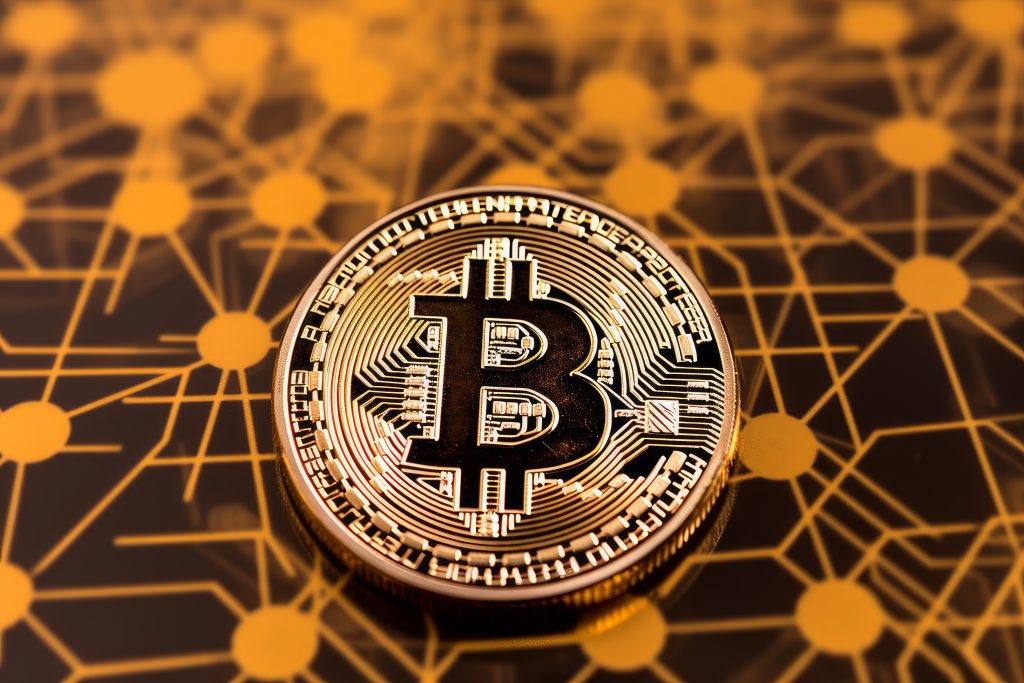In the dynamic and ever-evolving world of blockchain technology, a new phenomenon has emerged that is reshaping our understanding of Bitcoin – Bitcoin Ordinals. This groundbreaking innovation, launched in 2023, has breathed new life into the quintessential blockchain, Bitcoin, by assigning unique identities to each individual satoshi (the smallest unit of Bitcoin) and appending additional data through an inscription. This has opened up the possibility of non-fungible tokens (NFTs) on the Bitcoin blockchain, a concept previously exclusive to smart-contract-based chains like Ethereum, Solana, and BNB Chain. This development has not only expanded the functionality of Bitcoin but has also sparked a new wave of interest and excitement in the blockchain community.
What Are Bitcoin Ordinals
Bitcoin Ordinals, also known as digital artifacts or Bitcoin NFTs, are a revolutionary way to inscribe digital content on the Bitcoin blockchain. This protocol, developed by Casey Rodarmor, allows digital content such as art, text, or video to be inscribed onto the Bitcoin blockchain, creating an immutable on-chain presence. This concept, although simple in theory, has profound implications for the future of Bitcoin and the broader Web3 ecosystem.
Unlike traditional nonfungible tokens (NFTs) on Ethereum and other blockchains, Bitcoin Ordinals aim to create a unique and permanent on-chain presence of a piece of art, text, or video. The genesis ordinal, a pixel art of a skull, was inscribed by Rodarmor on Dec. 14, 2022, marking the beginning of a new era in the Bitcoin ecosystem. This innovative approach has transformed the way we perceive and interact with Bitcoin, turning it from a mere value-transfer protocol into a versatile network capable of hosting a variety of digital content.
How Ordinals Work


The Ordinals protocol operates by assigning a unique serial number to each satoshi, transforming this smallest Bitcoin unit into a unique entity. These serial numbers are derived from the order of mining and transactions, serving as a stable identifier for each ‘inscribed’ satoshi. This innovation transforms Bitcoin from a solely value-transfer protocol into a more versatile network capable of hosting digital artwork, audio files, and videos.
The Ordinals protocol is based on the Ordinal Theory, which gives life to satoshis and allows them to be treated as atomic units on the Bitcoin blockchain. Ordinals, in their simplest state, are a numbering scheme for satoshis. This theory drives the mechanics behind how Bitcoin Ordinals work, defining satoshis as the atomic unit that can be identified and traded individually on the Bitcoin network.
This unique identification system allows each satoshi to be tracked, transferred, and imbued with meaning, thereby transforming Bitcoin from a purely value-transfer protocol into a more versatile network. This innovative approach has opened up new possibilities for the Bitcoin network, enabling it to host a variety of digital content, including digital artwork, audio files, and videos.
Bitcoin NFTs Before Ordinals
Before the introduction of Ordinals, NFTs existed on top of the Bitcoin blockchain through Counterparty. These NFTs have now been bridged to Ethereum. During the 2021 bull run, a RarePepe card was sold on Ethereum through Emblem Vault for $683,750. However, with the advent of Ordinals, Bitcoin NFTs are experiencing a resurgence, attracting both original creators and successful NFT copycats.
Almost a decade before the introduction of Ordinals, NFTs existed on top of the Bitcoin blockchain through Counterparty. These NFTs have now been bridged to Ethereum. During the 2021 bull run, the earlier mentioned trading Card sold on Ethereum through Emblem Vault for a lot of money. This was before Bitcoin CounterpartyXCP, a Layer-2 that enables NFTs on Bitcoin, was popular. In fact, these Bitcoin NFTs go back to 2014. However, it isn’t likely that they will live to see other bright days ahead. Counterparty Bitcoin NFTs are more like collectible relics from the past.
Famous Bitcoin NFTs
Bitcoin NFTs have seen both brilliant success stories and disheartening scams. Despite these hurdles, the Bitcoin Ordinals ecosystem has experienced steady growth, with an increasing number of users contributing a diverse array of content. Here are some of the most famous Bitcoin NFTs:
- TwelveFold: Bitcoin NFT collection TwelveFold by Yuga Labs brought generative art to the mother chain. They introduced 288 unique assets in March 2023, generating 735 BTC in sales (or $16.5 million).
- DeGods Bitcoin NFTs: DeGods, another collection that often sits in our Top NFT Rankings, made a bold move with a Bitcoin NFT minting experience in March. It migrated 535 NFTs from its original collection to Bitcoin, creating a buzz in the community.
- Bitcoin Punks and Ordinal Punks: Bitcoin clones of the famous OG collection CryptoPunks became leading collections in May. The same happened with the popular collection Nakamigos – it gained its own copycat Bitamigos that managed to give potential scammers rewards for people’s naiveness.
Bitcoin Ordinals vs. Traditional NFTs
Bitcoin Ordinals and traditional NFTs, while similar in concept, differ in several key ways. To better understand these differences, let’s look at a comparison table:
| Feature | Bitcoin Ordinals | Traditional NFTs |
|---|---|---|
| Blockchain | Bitcoin | Ethereum, Solana, BNB Chain, etc. |
| Data Storage | On-chain | Off-chain |
| Uniqueness | Each satoshi is unique | Each NFT is unique |
| Interoperability | Limited | High (ERC-721, ERC-1155) |
| Smart Contract Functionality | Limited | High |
| Environmental Impact | Lower (Proof of Work) | Higher (Proof of Stake) |
Bitcoin Ordinals differ from traditional NFTs in that they are inscribed directly onto the Bitcoin blockchain, meaning the data is stored on-chain. This is in contrast to Ethereum-based NFTs, which typically hold the metadata or a pointer to the art off-chain. This means that the size of the blockchain would increase as new applications emerge and network utilization and transactions increase.
Furthermore, while Ethereum-based NFTs benefit from a well-established ecosystem where smart contracts can give rise to a wide range of NFT attributes, Bitcoin Ordinals are limited in their smart contract functionality. However, this limitation is offset by the unique advantages offered by the Bitcoin network, such as its robust security and widespread adoption.
How to Mint Ordinals
Minting, or inscribing, Bitcoin Ordinals is a technically complex process. However, no-code ordinal mining applications like Gamma or the Ordinals Bot aim to simplify this process. Here’s a step-by-step guide on how to mint Ordinals:
- Choose Your Content: Decide on the digital content you want to inscribe onto the Bitcoin blockchain. This could be a piece of art, text, or video.
- Upload Your Content: Use a no-code ordinal mining application like Gamma or the Ordinals Bot to upload your content. These applications will convert your content into a format that can be inscribed onto the Bitcoin blockchain.
- Set Your Parameters: Choose the number of satoshis you want to inscribe your content onto. Remember, each satoshi will receive a unique serial number.
- Mint Your Ordinal: Click on the “Mint” button to inscribe your content onto the Bitcoin blockchain. This process may take some time, depending on the size of your content and the current state of the Bitcoin network.
- Verify Your Ordinal: Once your ordinal has been minted, you can verify its existence on the Bitcoin blockchain using a blockchain explorer. Your ordinal will be permanently inscribed onto the Bitcoin blockchain, creating an immutable on-chain presence for your digital content.
Trading Ordinals: A New Market Emerges
As Bitcoin Ordinals grow in popularity, options to buy these unique digital assets have also increased. You can purchase them directly from the creator, which offers authenticity and a direct contribution to their work. Online NFT marketplaces are starting to list Bitcoin NFTs, providing a variety of choices and a secure platform for transactions.
In June 2023, the centralized Binance NFT Marketplace, for example, started supporting Bitcoin NFTs. This move by one of the largest cryptocurrency exchanges in the world signals a growing acceptance and interest in Bitcoin Ordinals.
However, trading Bitcoin Ordinals is not without its risks. As with any emerging market, there are potential scams and fraudulent activities. Therefore, it’s crucial to verify the credibility of the seller and the platform before making a purchase.
Peer-to-peer transactions via online forums or dedicated platforms offer minimal intermediaries but require caution due to potential risks. Whichever route you choose, always verify the credibility of the seller and the platform.
The Future of Bitcoin Ordinals


The future of Bitcoin Ordinals is promising. As the Bitcoin application tier experiences its first major breakthrough, the narrative is shifting from a pure “store of value” to something more utilitarian. However, as the infrastructure to inscribe and trade ordinals matures, the number of inscriptions could increase significantly, potentially affecting the fungibility of satoshis.
The introduction of Bitcoin Ordinals has opened up a new world of possibilities for the Bitcoin network. It has transformed Bitcoin from a purely value-transfer protocol into a more versatile network capable of hosting a variety of digital content.
However, the future of Bitcoin Ordinals is not without its challenges. The increase in the number of inscriptions could potentially affect the fungibility of satoshis and increase the size of the Bitcoin blockchain. Furthermore, the lack of smart contract functionality could limit the potential applications of Bitcoin Ordinals.
Despite these challenges, the future of Bitcoin Ordinals looks bright. With continued innovation and development, Bitcoin Ordinals could potentially revolutionize the way we interact with the Bitcoin network and open up new possibilities for digital content creation and distribution.









